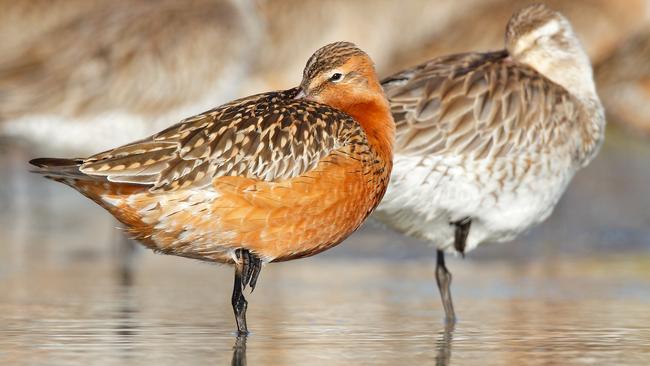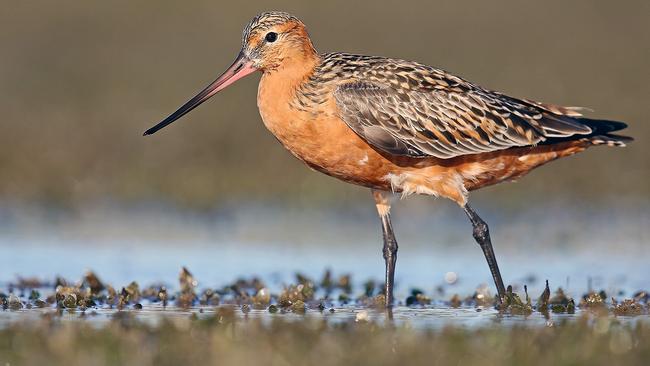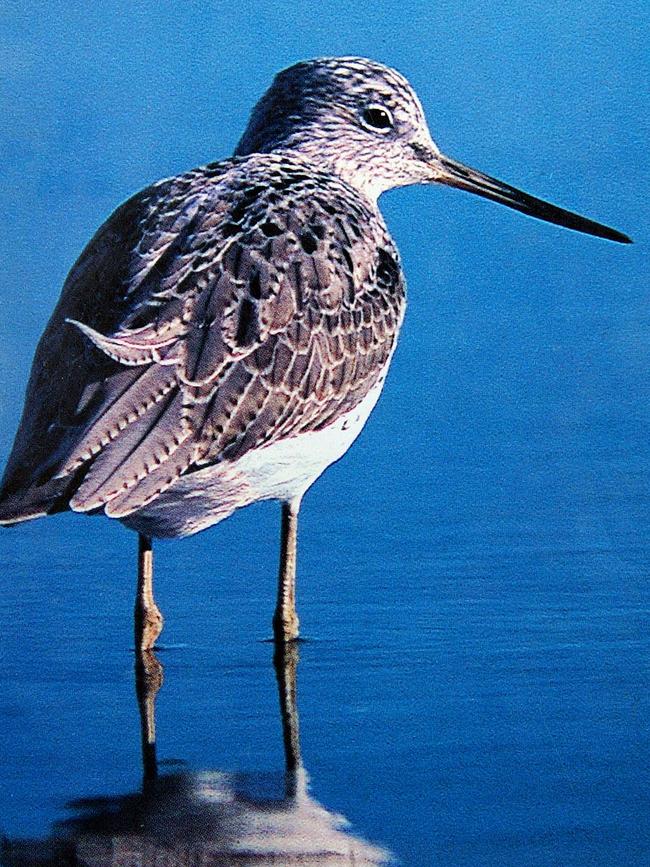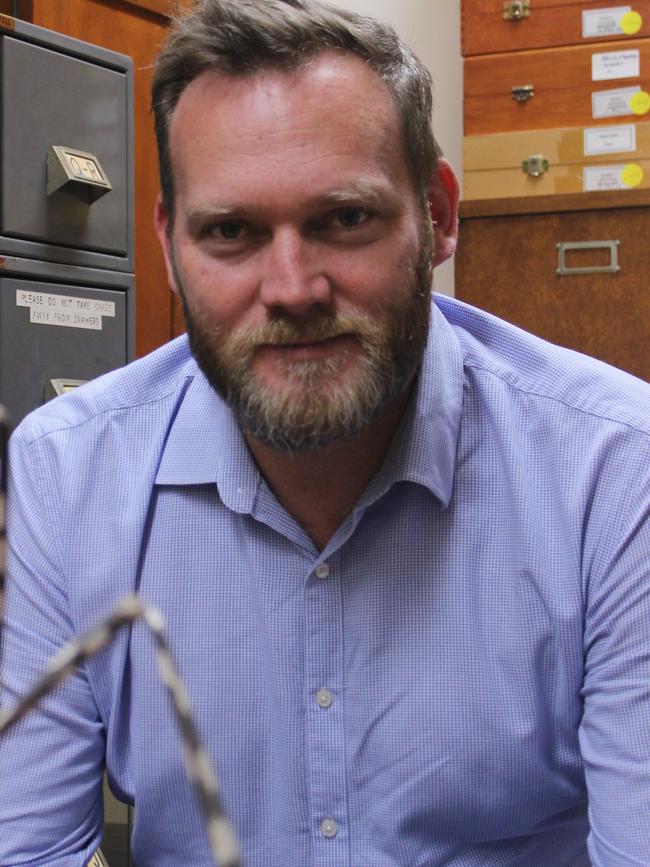How dog owners can help save threatened Bar-tailed Godwits
They are the feathered ironmen of the sky, but dogs chasing these much-loved birds around mudflats in Sydney’s inner west have put their existence under threat.

Inner West
Don't miss out on the headlines from Inner West. Followed categories will be added to My News.
Dog owners have been urged to keep their pooches on a leash near wetlands in Sydney’s inner west where a threatened migratory bird is expected to arrive from as far away as Siberia next month.
The Bar-tailed Godwits, the feathered world-record holders for non-stop flight, have been embraced by Abbotsford schoolchildren — but their numbers are in sharp decline on the mudflats of Hen and Chicken Bay.
According to Bird Life Australia, more than 300 Godwits were recorded in the Parramatta River estuary between 2008 and 2011. However, in the 2018-19 season, the most seen was 91.
Godwits have been recorded travelling 11,000km from Alaska to New Zealand in eight days, flying at an average speed of more than 50km/h without sleeping, eating or resting.

Experts say Godwits, one of five Parramatta River mascots, can lose up to half of their body weight in these long-haul flights.
A University of Sydney environmental scientist says the biggest local threat is dogs chasing them on wetlands, stressing out the birds and sapping their energy levels ahead of the massive journeys.
“The problem with the dogs is not so much them attacking and killing the birds; what happens is that dogs chase them on mudflats at low tide, when the birds are there feeding on insects and other things,” Dr Cameron Webb said.
“What the birds are trying to do is fatten themselves up so they can fly back to Siberia, or New Zealand, as well as for breeding. But when they are chased by dogs, they are using up all their energy and don’t have as much time to feed.
“So, along with that energy loss, it causes the bird a great deal of stress and is leading the dwindling population of this species.”


Canada Bay councillors this week gave the nod to developing a biodiversity program, at a cost of $35,000, to tackle the threats to all shorebirds.
A public-awareness push is set to include signage upgrades, workshops and enforcement to educate residents and influence behaviour about the threats to birds including the Godwits.
“These declining numbers represent a significant cause for concern for our city; the delicate balance between our lifestyle, our development and our natural environment is something of which we must always be conscious,” Canada Bay Mayor Angelo Tsirekas said.
“This issue is vitally important for our city — the Bar-tailed Godwit is emblematic of the heath and diversity of the Parramatta River.”
Dr Webb said his message to dog owners was to “keep your pooch on a leash when you are walking past wetlands” in the inner west.
“If you want to let your dog have a run, go to one of nearby off-the-leash parks,” he said.
CANADA BAY’S UNRESTRICTED OFF-LEASH AREAS
● Battersea Park (Concord end of the park) Battersea Street, Abbotsford
● Charles Heath Reserve — Queens Road, Five Dock
● Cintra Park — Lyons Road West, Canada Bay
● Drummoyne Park (above Drummoyne Oval) Bayswater Street, Drummoyne
● Five Dock Park (fenced area near Five Dock Skatepark) Ingham Ave, Five Dock
● Kendall Reserve — Kendall Street (fenced area), Cabarita
● King George V Park — Concord Road (fenced area), Rhodes
● Lower Phoenix Park — Shoreline Drive (fenced area), Rhodes
● Lysaght Park (on Five Dock Bay) Byrne Ave, Chiswick
● Majors Bay Reserve Nullawarra Ave, Concord
● Powells Creek Reserve — Conway Ave, North Strathfield
● St Georges Crescent Reserve (opposite Sailing Club) St Georges Crescent, Drummoyne
● Timbrell Park (western end, beyond the children’s play area) Henley Marine Drive, Five Dock
● Storey Park (beside RSL Bowling Club) McKinnon Ave (off Lyons Road), Five Dock.
